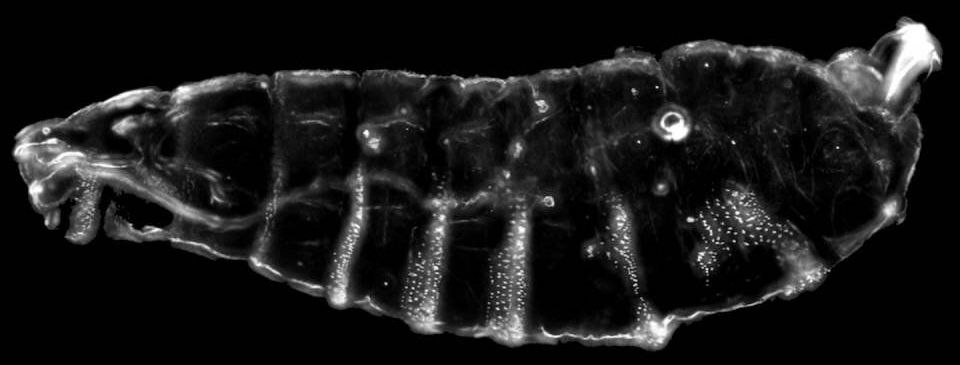Researchers at Princeton University have revealed the inner workings of a gene repression mechanism in fruit fly embryos, adding insight to the study of human diseases.
Led by graduate student Shannon Keenan, the team used light to activate chemical signals in developing fruit flies and traced the effects on a protein called Capicua, or Cic. Located in a cell’s nucleus, Cic binds to DNA and performs the specialized task of silencing genes. The study, published in Developmental Cell and made available online March 5, reveals the dynamics of gene repression by this protein.
In a complex piece of music, the silences running through the melody contribute as much to the score’s effect as the sounded notes. The biological processes that control development rely on highly sophisticated temporal patterns of gene activation and repression to create life’s beautiful symphonies. When a pattern is disrupted, it’s like a wrong note in the music. In this case, Cic is a repressor protein that silences certain parts of the genome, allowing other genes to express in harmony with one another. Understanding how repressors like Cic work allows researchers to better conduct the orchestra.









Comments are closed.